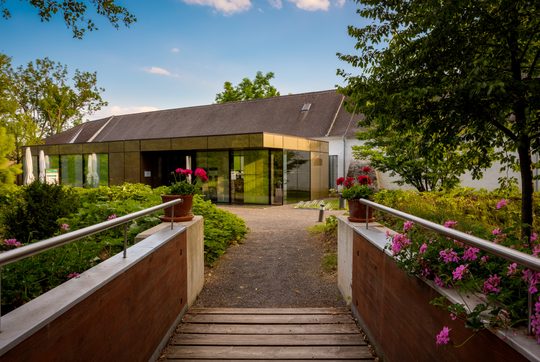Schewa Kehilot

Since 2022, the Moreausaal in the palace at Eisenstadt has hosted the first-ever exhibition exploring the Esterházy family's role as protectors of the 'Seven Communities'.
Isolated groups of Jewish settlers had existed in the region of present-day Burgenland as early as the 14th and 15th centuries, but Jewish life only flourished here after the Esterházy family had established itself as rulers from the 17th century onwards. After Paul I Prince Esterházy resumed a pro-Jewish policy, he allowed Jews to resettle in his dominions from 1676 onwards, despite having previously expelled them from the communities of Eistenstadt, Mattersdorf, and Lackenbach in 1671 - presumably under the influence of Emperor Leopold I's decree of 1670/71 banishing Jews from Vienna and Lower Austria. The princely Jewish communities, since then known as the 'Seven Communities', endured from 1739 until the end of Esterházy protective rule in 1848, and subsequently developed a bustling economic and intellectual-cultural life.
Now, for the first time, an exhibition in the Moreausaal of Eisenstadt palace is devoted to Jewish life under the Esterházys, revealing previously little known and researched aspects of Jewish history in the former Esterházy domains of then-western Hungary. On display are historical documents and publications, plans, maps, and objects, many of which have remained largely unknown until now, which offer a multi-faceted look into the living situations and conditions of Jews under Esterházy protection.
שבע קהילותשבע הקהילות היהודיות תחת נסיכי אסטרהאזי (1848-1612)3 ביוני – 2 באוקטובר 2022ארמון אסטרהאזי, אייזנשטטארמון אייזנשטט מארח לראשונה תערוכה המוקדשת למשפחת נסיכי אסטרהאזי בתפקידם כנותני חסות לקהילות היהודיות המכונות "שבע הקהילות". התערוכה, שתוצג באולם מורו (Moreau), צפויה להיפתח ביוני 2022, והיא הראשונה מסוגה בעולם.מתיישבים יהודים ראשונים חיו במרחב של מדינת בורגנלנד הנוכחית כבר במאות ה-14 וה-15, אך החיים היהודיים פרחו כאן רק לאחר שמשפחת אסטרהאזי ביססה את שליטתה באזור זה, החל במאה ה-17.הנסיך פאול הראשון לבית אסטרהאזי הושפע כנראה מהקיסר לאופולד הראשון, שהורה בשנת 1670/1 לגרש את היהודים מווינה ומאוסטריה התחתית, וב-1671 גירש בעצמו את יהודי קהילות החסות שלו – אייזנשטט, מטרסדורף ולקנבך – אך בשנת 1676 אימץ מחדש מדיניות אוהדת כלפי היהודים והתיר להם לשוב ולהתיישב באזורי השליטה שלו.הקהילות הנסיכותיות היהודיות, שנודעו מאז כ"שבע הקהילות", היו קיימות החל משנת 1739 ועד סוף תקופת שלטון החסות של בית אסטרהאזי בשנת 1848, והתפתחו בהן חיים כלכליים, רוחניים ותרבותיים ערים.לראשונה בארמון אייזנשטט, באולם מורו, מוקדשת תערוכה לחיים היהודיים תחת חסות נסיכי משפחת אסטרהאזי. התערוכה מפנה זרקור לעבר היבטים שהיו אומנם ידועים, אך טרם נחקרו ביסודיות, של היסטוריה היהודית באזורי החסות של שושלת אסטרהאזי במערב הונגריה. מוצגים מסמכים ופרסומים היסטוריים שרובם לא היו מוכרים עד כה, מוצגים בתערוכה לצד תוכניות, מפות ופריטים נוספים המאפשרים לנו להתוודע מזוויות רבות לנסיבות ולתנאי חייהם של היהודיות והיהודים המוגנים בקהילותיהם.





